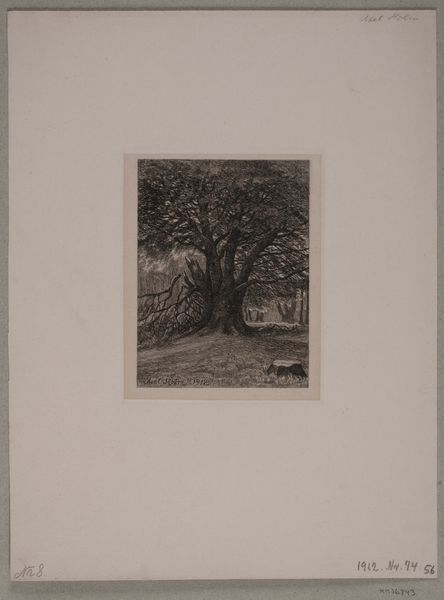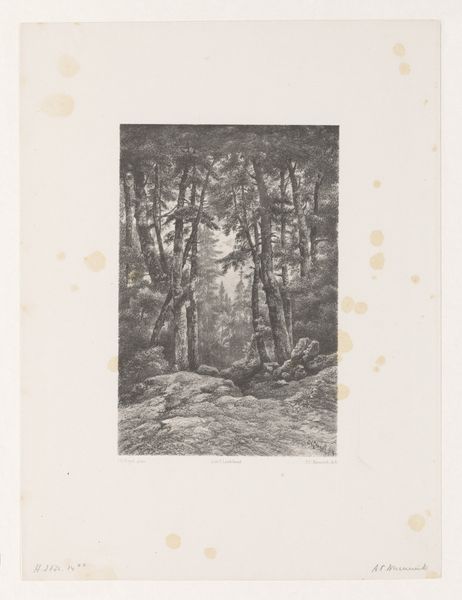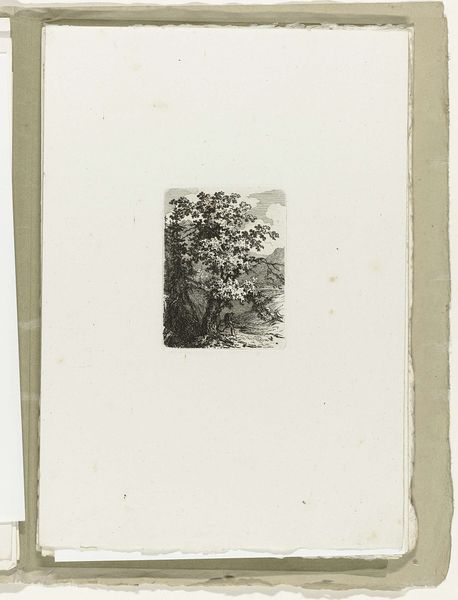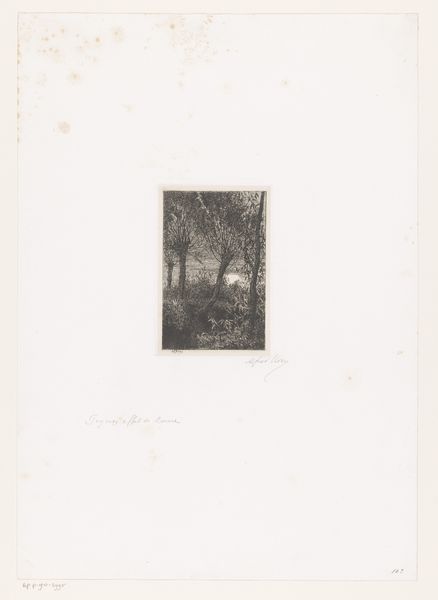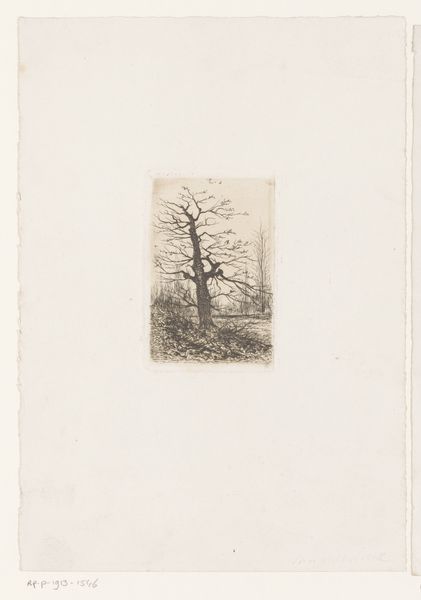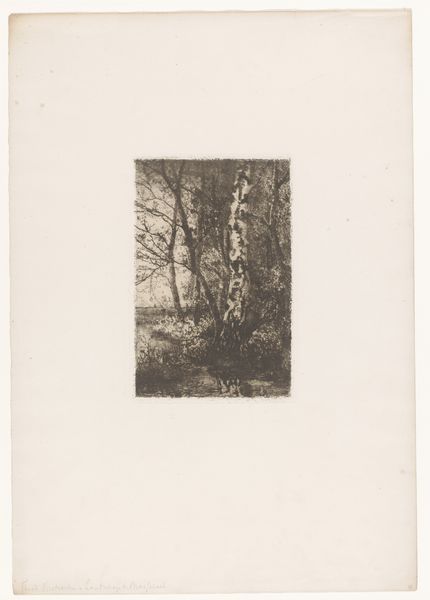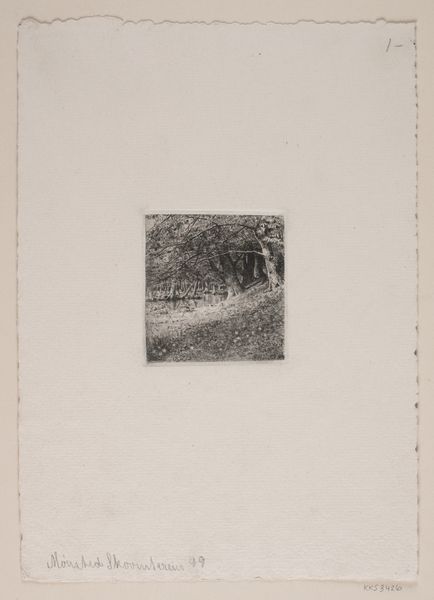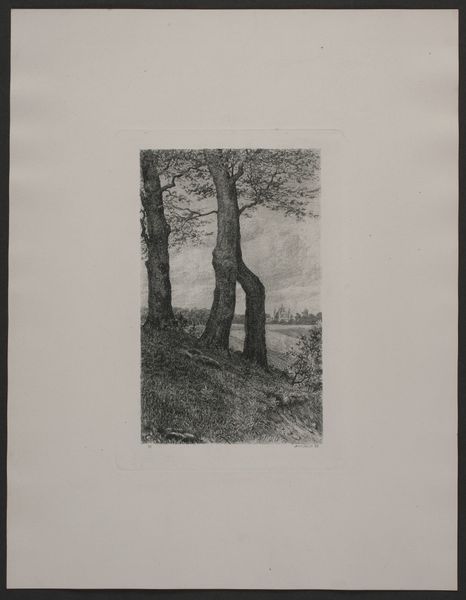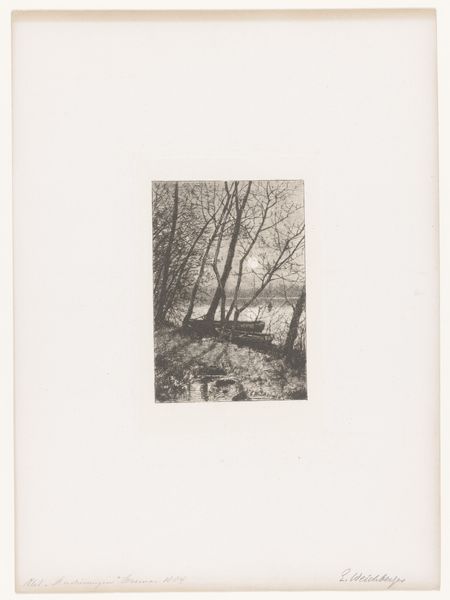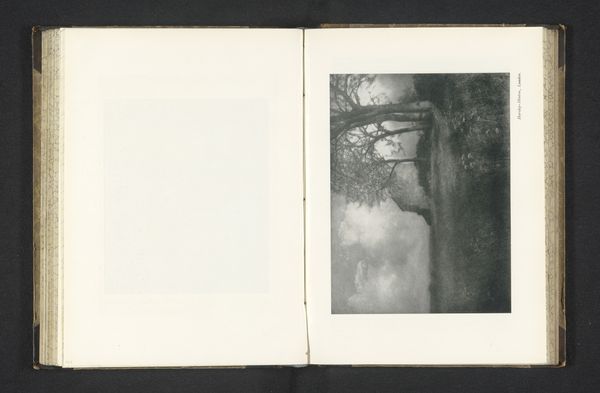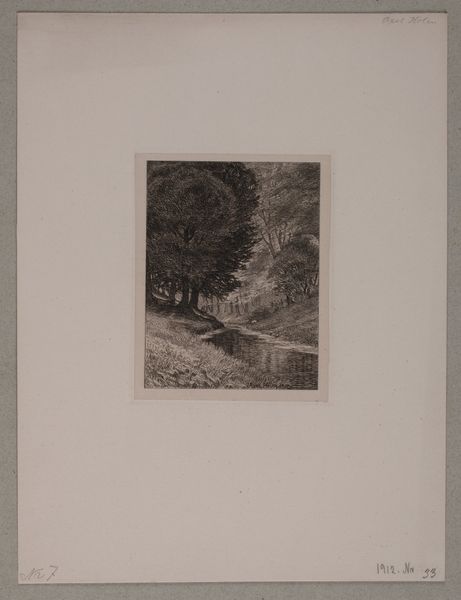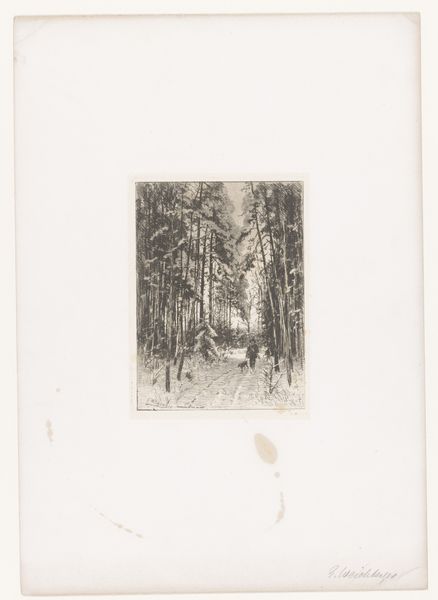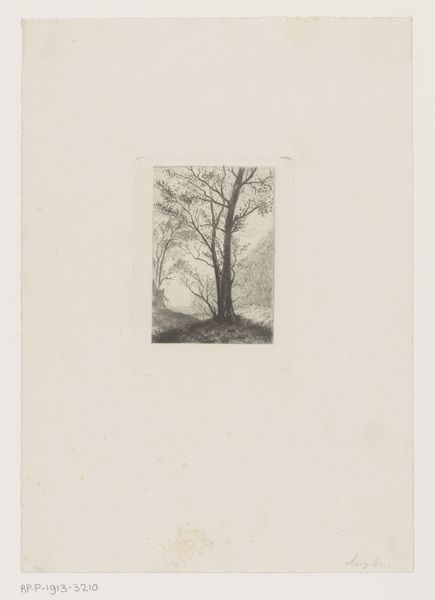
print, engraving
#
pencil drawn
# print
#
pencil sketch
#
landscape
#
pencil work
#
engraving
#
realism
#
monochrome
Dimensions: 215 mm (height) x 165 mm (width) (bladmaal), 115 mm (height) x 80 mm (width) (billedmaal)
Editor: So, this is "En træstamme," or "A Tree Trunk," an engraving made between 1848 and 1907, possibly by Oscar Andersen. It’s incredibly detailed for a print. I'm struck by the artist’s patience. All those tiny lines... it’s so… dense. What do you see in it? Curator: I see a reflection of its historical moment – the mid-19th century. Realism as an artistic movement aimed to depict the world objectively, particularly the lives of ordinary people and the natural environment, without romanticization. What isn’t visible is a focus on indigenous trees and forests. What stories might these silent witnesses hold about colonization and changing land ownership? Who had access to leisure to pursue art like this? Editor: I hadn't thought of it in terms of colonization... so the romanticizing the forest hides an underlying social inequity? Curator: Exactly. And consider the medium – engraving. It’s a meticulous, labour-intensive process. Think about the role of art production during a time of growing industrialization. Does the act of painstakingly engraving a tree trunk become a statement about the value of slow, handmade creation against the backdrop of mechanization? It is worth noting the environmental concerns, or lack thereof. How does this compare to modern artists working today to show the need to conserve trees, forests and the land they are a part of? Editor: Wow. I was just looking at the details in the leaves. Now I'm thinking about so much more. Thanks! Curator: Of course! Looking at the art world in context can show all sorts of interesting concepts to consider.
Comments
No comments
Be the first to comment and join the conversation on the ultimate creative platform.
